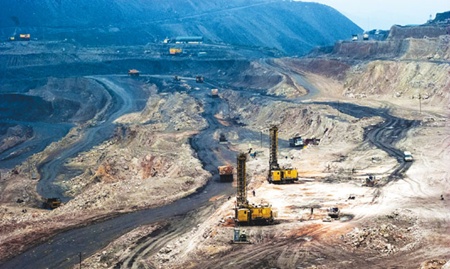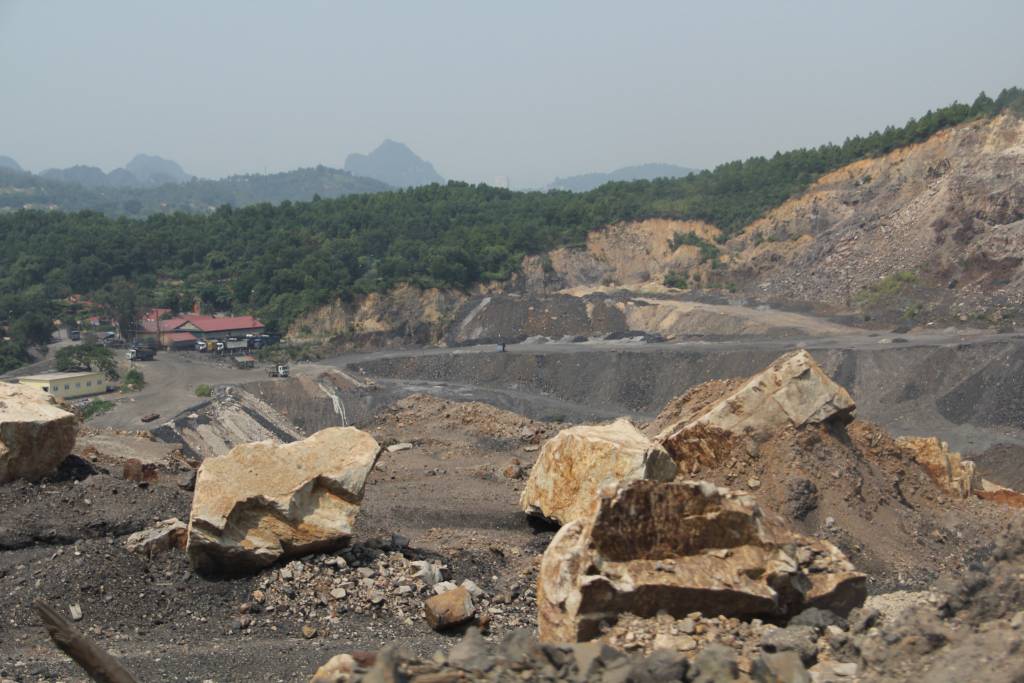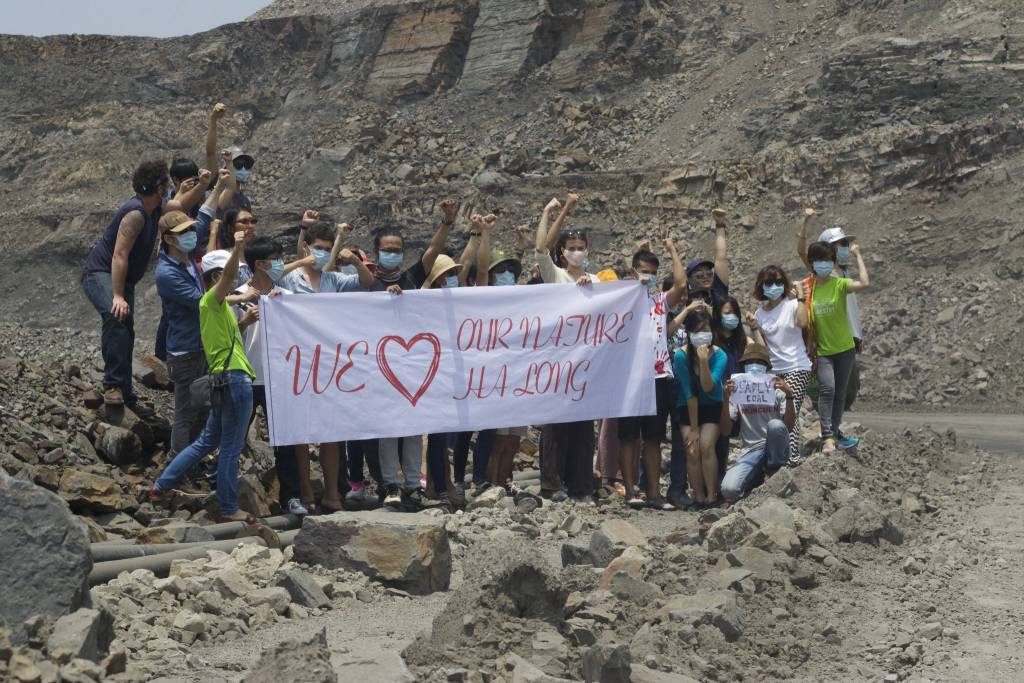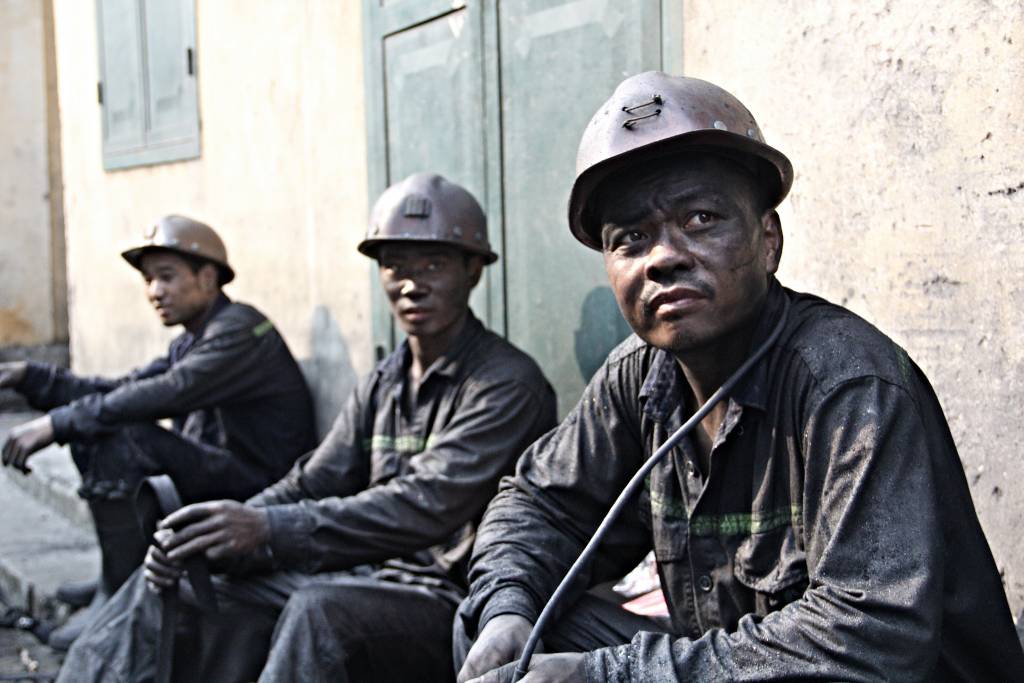
A coal mining site of the Coc Sau Coal Coporation in the northern province of Quang Ninh. VNA/VNS Photo Trong Dat
Here’s an update from one of the participants in a recently conducted exposure trip to coal mines in Quang Ninh Province.
You know that tingling in your skin when seeing a sublime vista destroyed by this species called Homo sapiens?
Man, how much I hate that feeling.
Although in this day and age, when a simple Google click gives you a thousand clips and images of remnants of what were once magnificent nature wonders, that tingling anger-feeling tends to get numb over time.
Or at least that was how I felt when swiping my phone back and forth to look at pictures like this one:
Humans destroying the environment.
How original, tell me something I haven’t heard before!
Trying to deal with environmental injustices in Vietnam can be incredibly numbing. For 24 years, I had felt extremely frustrated yet deterred from taking any meaningful action. It was tough to sustain a withering passion in preserving nature, when I grew up in a culture whose majority seemed to care so little about Mother Nature.
That’s why when I received the EACLC acceptance email from CHANGE and 350.org Vietnam, I was so ecstatic.
What: EACLC- East Asia Climate Leaders Camp.
Where: Ha Long bay in Quang Ninh province– a natural heritage recognized by UNESCO.
When: August of 2015.
Who: a bunch of environmental enthusiasts from 8 different countries, mostly in East Asia.
A camp on Climate Change with trips to coal mines. I hope you get the connection. If not, try this diagram:
Burn Coal–> CO2–> Human-induced Climate Change (–> the doom of Earth)
Let’s face it, Coal is really. really. Bad.
So there I was, looking up pictures of coal mining on a bumpy bus ride to a mine called Ha Lam, the first highlight of our four-day EACLC event. During a briefing the day before, our facilitators went in great length to explain the impacts coal mining was having on Quang Ninh province, their desire to stop further development of coal fired-power plants in Vietnam, and the potential role of EACLC participants in realizing this ambitious desire.
But let’s face it, what could a group of mostly youths visiting coal mines really do to change?
When Ha Lam finally came into view, well, I could not careless about answering the question above.
All I felt was this burning anger.

A partial view of the open pit at Ha Lam. Photos cannot do this justice. It really looked worse in person. Photo: Silver Chiang.
There is a difference between passively looking at the little screen of your iPhone, and witnessing the human catastrophes in real life with your own eyes. I remember the bumpy bus all of a sudden turned noiseless. Time stood still. All the bubbly excited EACLC participants just went dead silent. People slowly moved to the side of the bus that looked down to the pit, which was clearly a base of a former mountain top.
Accompanying us was a governmental official from the local Department of Tourism who, believing that EACLC was just an innocent naive group of tourists, was proudly explaining how the mining company would use rocks and dirt blasted from one mountain top, to build another mountain top filled with plush green trees. Perfect reclamation. Restoring nature was that easy. The mining industry was that sustainable.
Staring at her in disbelief, I wondered if the woman was hearing herself. But then again, it was so likely that’s the only information she was ever taught. Sometimes you cannot really blame a person’s assumption if the surrounding influential environment is what shapes such personal assumption.
The bus driver killed the engine. EACLC participants unboarded, feeling heavy hearted. Still under the pretense of curious tourists, we put on fake protective miner clothing designed only for guests, and started touring the mine. The governmental officials were so excited to show us around, pointing out the great dining hall and shower rooms for the miners, the mandated great safety requirements, the great health benefits, the great overall system they had in place to run the mine.
The picture they were painting was really positive, I had to admit. Things seemed to be going really well for the coal miners. However, we did not get to personally interview any of them. Instead we gave gifts to clean miners eating in their shiny dining hall, snapping beautiful smiley pictures together, and off we went to the next coal mine: Vang Danh.

East Asia Climate Leaders Camp participants declare their care for Halong. Photo: Fenton Lutunatabua
The earlier burning anger was still in me though. As the bus crossed the open pit again. Yet my anger was compromised.
If all the miners looked that happy and were working in such great facilities (we were never allowed in the excavating sites), would it be realistic to wage war against the mining industry, shut it off and take away jobs of thousand poor locals?
Funny (or sadly) enough, the Vang Danh mine definitely answered parts of such question.
We were lucky to arrive at Vang Danh just when the miners were switching shifts. Miners who had spent close to eight hours underground started to emerge from decline portals. The stark contrast to the miners we met in Ha Lam was stupefying. They were completely covered in coal dust. Completely blackened. Save for their eyes and mouths.
Never missed the chance, EACLC participants immediately broke into groups and engaged the miners. Suffice to say, their grounded stories were agonizing. For some, coal mining was the only job that generations of their families knew how to do. For some, it was the only job that would provide enough for their families. For some, it was the only job available in the area.
Everyone knew vaguely about the severe health issues coal mining was bestowing them. Lung cancer. Cardiovascular damages. Mines collapses. Early Death. But when the average month salary approached $1,000/ month, many chose to not think about these issues. Making a living was what mattered the most.
…
On papers, it is a no-brainer to see why we should stop constructing more coal-fired power plants, and stop burning coal altogether to that extent. Effects of CO2 and greenhouse gases are already increasing at an alarming rate, and their severe consequences are impossible to overlook. A TIME issue in August 2015 quotes President Obama saying “there is such a thing as being too late.” It is a chilling sentence to read out loud.
In reality, however, the answer to what will happen to thousands of miners when their mines shut down remains unsatisfyingly elusive. Long-term benefits like improved health, better life quality and restored environment are certainly slam dunks. But these are overshadowed by the immediate threat of unemployment. The renewable energy industry has yet to take off in Vietnam. On top of that, it takes a lot of time and efforts to re-equip mining communities with new skills and to find alternative stable jobs for them. Experts can argue all they want about coal problems, but any change would require tremendous sacrifices from the miners. After hearing their stories, who could blame them for being reluctant in making those sacrifices?
I certainly could not, especially when Vietnam is still figuring out a satisfactory solution.

Miners who just finished their shift at Vang Danh. Photo: Silver Chiang.
The bus driver started the engine. The sun was about to set. Our tour at Vang Danh had ended. The government officials bid us joyful goodbye and reminded us to promote this new “tourism product.”
I chuckled, feeling even more heavy-hearted.
Humans destroying humans.
Now that always hits home.
…
You know that tingling feeling in your skin when seeing nature and lives destroyed by humans and their usage of coal?
Man, I loathe that feeling.
And I truly hope,
That you do too.